Nuclear Contradictions, Hypocrisy and Absurdities
The world has nine nuclear-armed powers today, and the U.S. treats them on a case-by-case basis, with no consistency.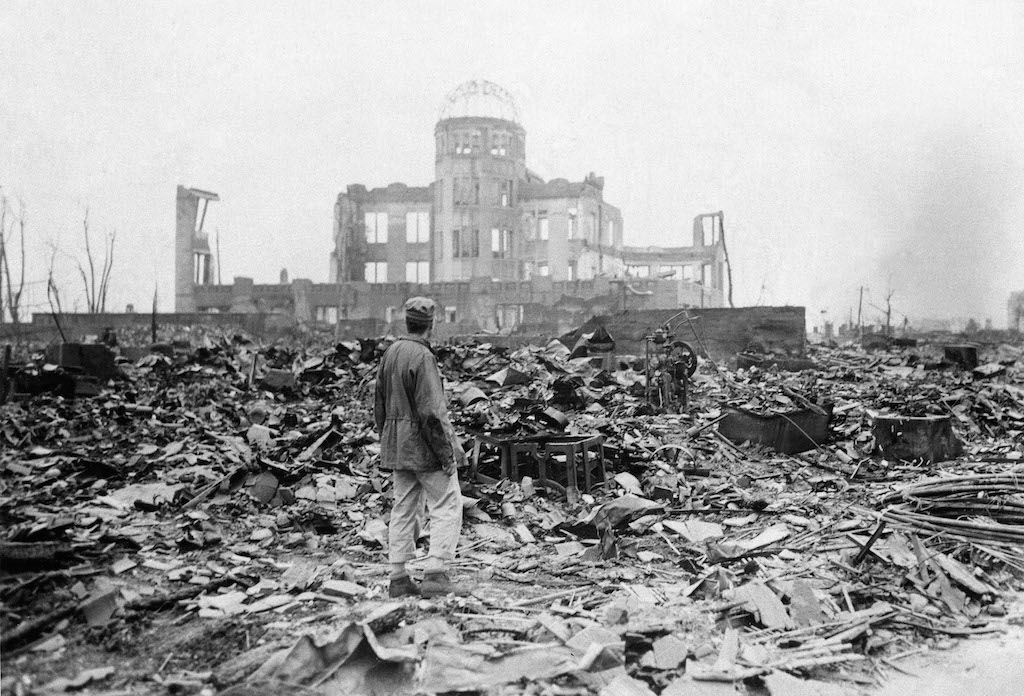 An Allied correspondent stands in the rubble of Hiroshima, Japan, a month after the United States exploded the first atomic bomb ever used in warfare. The bomb was dropped on Aug. 6, 1945. (Stanley Troutman / AP)
An Allied correspondent stands in the rubble of Hiroshima, Japan, a month after the United States exploded the first atomic bomb ever used in warfare. The bomb was dropped on Aug. 6, 1945. (Stanley Troutman / AP)
Now I am become death, the destroyer of worlds. —J. Robert Oppenheimer, American nuclear scientist, after observing an early U.S. nuclear weapons test
The year was 1983. I was still in the womb, as an earlier celebrity president, also obsessed with television, sat down to view a highly touted TV movie, “The Day After.” Ronald Reagan, like Donald Trump, was a star—a famous actor—and also a well-known Republican foreign policy hawk with an aggressive nuclear weapons posture. The movie was a dystopian portrayal of the aftermath of a Soviet nuclear attack in the small college town of Lawrence, Kan., where I now live.
Reagan (like Trump) wasn’t keen on briefing books or detailed memos. He was a visual learner, and “The Day After” deeply affected President Reagan. It wasn’t quite a “road to Damascus” moment, but soon afterward, Reagan began to rethink his combative nuclear posture.
In the ensuing years, Reagan proved willing to work with Soviet Premier Mikhail Gorbachev to dampen Cold War tensions and begin a process of gradual nuclear disarmament. For a president, Reagan, who had run on a policy of rolling back communism and had called the Soviet Union an “evil empire,” the shift was profound.
Look, it wasn’t a perfect process. I’m not even a Reagan fan—all in all, I think he was a terrible president. Nevertheless, Reagan did come to see some of the absurdity of nuclear brinksmanship. His successor, George H. W. Bush—the elder—helped bring the Cold War to a speedy conclusion and promised Gorbachev that the U.S. would not dance on the Soviet Union’s grave or expand the NATO alliance into Eastern Europe. Gorbachev left power in December 1991, Bill Clinton defeated Bush the following November, and the U.S. proceeded (and still proceeds) to renege on all those promises. NATO expanded right up to the very borders of Russia, U.S. military bases encircled the old Soviet Union and, just a few months ago, President Trump’s National Defense Strategy all but declared a new Cold War with Russia and China.
Our present moment, with the doomsday clock ticking closer to midnight, seems like an appropriate time to reevaluate the contradictions, hypocrisy and absurdities at the heart of U.S. nuclear strategy. The realities are shocking and staggering.
The first five nuclear powers are the victorious nations in World War II: the U.S., Britain, France, Russia and China. These countries also hold permanent seats on the United Nations Security Council. The U.S. doesn’t object to France and Britain, of course. They’re longtime allies. Russia and China are scarier, but after 50 years we’ve learned to live with them as nuclear-armed powers. Then there’s India and Pakistan. These two South Asian regional powers are more disturbing, since they’re mortal enemies with significant arsenals pointed at each other. The U.S. is concerned about Pakistan’s so-called Islamic bomb, because Pakistan is a Muslim-majority country (and those are scary) and it has had a nuclear scientist—A.Q. Khan—collude with al-Qaida in the recent past.
The final two, I call the “rogue” nations. The first is North Korea. That’s an obvious one. The other? Israel. That’s right. Controversial as that’s certain to be, Israel refuses to confirm or deny whether it has nuclear weapons (it does) and insists on remaining the only nuclear power in the Middle East. All the while, it illegally occupies sovereign Palestinian territory in contravention of international law.
Here’s where the hypocrisy starts to creep in: Officially, the U.S. deplores all nuclear proliferation. Unofficially, we look the other way when “friends” and “allies” break the rules and develop an arsenal of their own. That’s why Richard Nixon and Henry Kissinger looked the other way when Israel developed nukes (I’ve read their declassified meeting minutes), and President George W. Bush actually signed a nuclear agreement with India. Well, we like India and Israel. North Korea (and dare I say, Iran) not so much.
Look, countries have to look out for their best interests and form strategic coalitions. Still, it would behoove U.S. policymakers to understand why our ongoing nuclear policies might come across as hypocritical in many parts of the world. Furthermore, America’s alarmist proclamations about nuclear proliferation often come across as hysterical, racist and unrealistic.
Consider the rhetoric surrounding North Korea and Iran (which hasn’t even gone nuclear yet). The Trump administration flexes its muscles to intimidate both countries and even threatens to unleash “bloody nose” strikes and “fire and fury” against one or the other power. The prevailing assumption is that if North Korea has even a few missiles, or if Iran builds even one nuclear weapon, that their leaders would inevitably start flinging nukes at New York, Washington, D.C., or Tel Aviv. That’s insane. I’m not a big fan of Kim Jong Un or Ayatollah Khamenei, but it dehumanizes Korean and Iranian leaders to categorically assume they are suicidal and irrational. Believe me, a nuclear war doesn’t end well for Iran or North Korea, or anyone.
Americans don’t seem to see the hypocrisy (but you can bet the rest of the world does) in the fact that, to this day, only the United States has dropped nuclear bombs on the heads of real, live human beings, mostly women and children, in Hiroshima and Nagasaki. Nonetheless, the world is forced to listen to America’s insufferable rhetoric about how no one else (besides our friends) could possibly be trusted with nukes. Let me be clear. I’m by no means in favor of widespread nuclear proliferation. I’d prefer these suicide machines be gradually abolished, but I’m merely deflating the myths and pointing out widespread hypocrisy.
Furthermore, the U.S. has expanded its NATO (by definition anti-Russian) alliance right up to the borders of Russia. That means the U.S.—because of the mutual defense commitments of the alliance—has extended its nuclear umbrella to, well, Latvia, for example. How many Americans could find Latvia on a map? How many know the U.S. is legally committed to defend Latvia from Russian incursions, up to and including with nuclear war? Think on that for a second. I mean really think. Should the U.S. fight a major (potentially nuclear) war over Latvia? Would it? If the answers to both questions are “no”—and I’ll submit they likely are—what does that say about the brinkmanship of U.S. policies and NATO commitments? Folks, this is serious business.
And Russia, well, it’s got a ready (and equally dangerous) response to NATO expansion. Putin, boasting an economy about the size of Italy or Spain, knows he can’t field an army to overwhelm Western Europe. So in response to NATO expansion, Russian strategists are discussing a new potential policy known as “escalate to deescalate.” In other words, fire off “small,” “tactical” nuclear weapons to convince NATO to back down and back off. Sound crazy? That’s because it is. It’s also a Russian fantasy to believe a first use of nukes, of any size, won’t escalate to outright nuclear war. That’s a heck of a bet, and too rich for my blood.
The U.S. response is to consider increasing its own stocks of “non-strategic” (read: lower-yield) nuclear weapons in and around the Russian periphery. You see how this works? Each side attempts to one-up the other, raising the stakes until we’re all on a hair-trigger war alert. The irony here is that smaller, lower-yield, shorter-range nukes tend to be more dangerous, because they give the country’s leaders the crazy idea that it might just be possible to safely employ these horrific bombs. It isn’t.
1. Despite all the alarmist rhetoric (even on the MSNBC-“Russiagate”-conspiratorial left), neither Russia, China nor any other nuclear-armed adversaries are actually bent on world conquest. That’s right, all the hysteria and close calls and nuclear bluffs are for nothing. They’re unnecessary and unhinged. Not only are these “adversaries” not out for global empire, they’re also not irrationally suicidal—which you’d have to be to send a nuke flying at an American target. What makes these powers dangerous is their (justified) feeling of military encirclement by the United States. They fear for the survival of their regimes (not an absurd sentiment given what happened to the Taliban, Saddam Hussein and Muammar al-Qaddafi recently), which makes them likely to act like cornered, wounded animals. It’s best to calm the rhetoric and not provoke these folks.
2. The whole hyper-masculine, Trumpian schoolyard-bully analogy is immature and inapplicable to serious, fate-of-the-world foreign policy decisions. President Trump loves this sort of simplistic rhetoric. Standing up to a bully sounds great and all, but—in a nuclear armed contest—no one walks away with just a bloody nose. We’re talking millions dead or the extinction of life on earth. Ever heard of nuclear winter? The reality is that violence begets violence, so let’s cool the grade-school-platitudes.
3. One man, the sitting president of the United States, holds the unilateral power and decision to launch a nuclear apocalypse. Congress doesn’t have to declare war, there aren’t any checks or balances, and that’s that. A recent article referred to the president of the United States—whether it’s Trump or even Barack Obama before him—as a “nuclear monarch.” That’s because he is. The U.S. Constitution placed the power to declare war in the hands of Congress (something it hasn’t done since World War II), and those 18th century patriots couldn’t possibly have foreseen the rise of nuclear technology. Nuclear war could kick off within minutes. Congress couldn’t and wouldn’t be able to retaliate fast enough. So, absurd as it seems, one man (and it always seems to be a man) holds the power of life or death (or human extinction) in his hands.
Let’s review. President Donald Trump (the self-proclaimed stable genius) has the unilateral power to launch a life-on-earth-ending nuclear strike. Reports indicate the man doesn’t read, so he may not understand the nature, and absurdity, of nuclear strategy.
President Trump needs his own “The Day After” moment (just as Reagan did all those years ago) to scare him straight. If only “Fox & Friends” would rebroadcast that old made-for-TV movie some morning.
All kidding aside, there’s an inconvenient truth here: Despite the president’s—and official Washington’s—obsession with the minuscule threat from terrorists, immigrants and other foreign, brown folks, there are only two existential threats to human existence: nuclear winter and climate change.
Tragically, the U.S.—the most powerful and well-armed country in the world—now has a president who possesses god-like powers over the former, and doesn’t believe in the latter.
The takeaway? We aren’t scared enough.
The views expressed in this article are those of the author, expressed in an unofficial capacity, and do not reflect the official policy or position of the Department of the Army, Department of Defense or the U.S. government.
Your support matters…Independent journalism is under threat and overshadowed by heavily funded mainstream media.
You can help level the playing field. Become a member.
Your tax-deductible contribution keeps us digging beneath the headlines to give you thought-provoking, investigative reporting and analysis that unearths what's really happening- without compromise.
Give today to support our courageous, independent journalists.
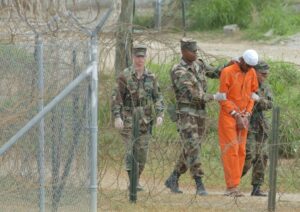
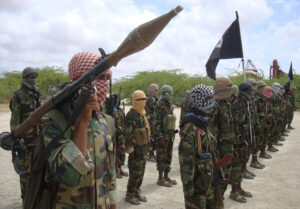
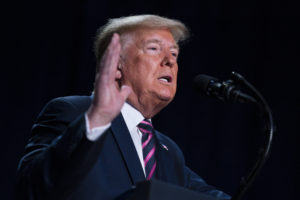

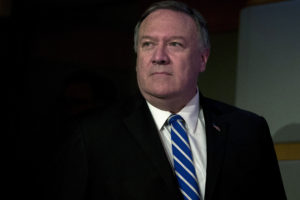
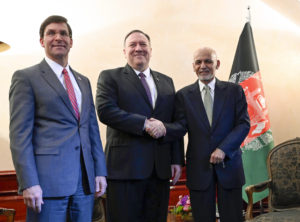
You need to be a supporter to comment.
There are currently no responses to this article.
Be the first to respond.